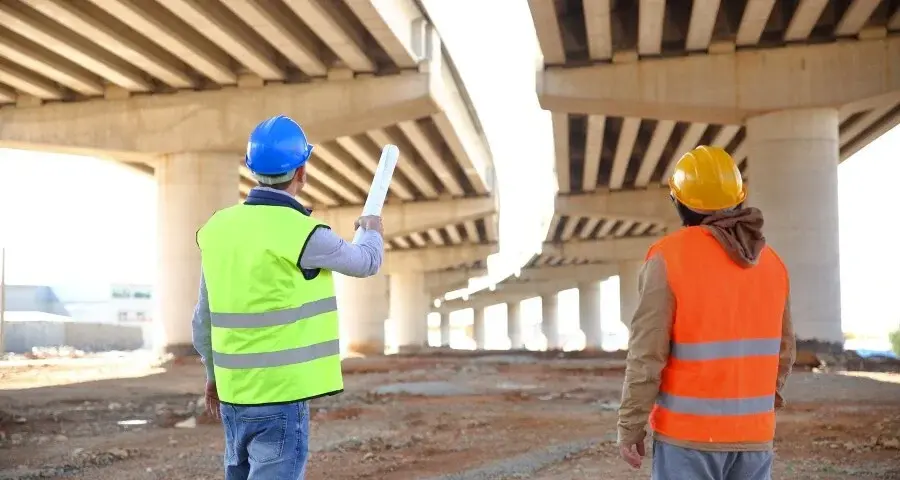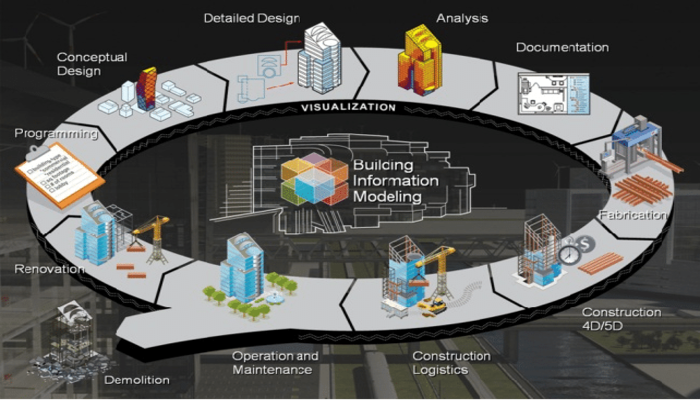
Currently, Civil engineering is going into a decisive phase shaped by sustainability, digital innovation, and modernization of global infrastructure. Engineers today are no longer limited to physical design; they integrate technology, data, and environmental insights to create long-lasting structures. The emerging trends in civil engineering highlight how collaboration tools, green materials, and automation are reshaping every stage of a project, from planning and modeling to maintenance. As new challenges such as climate change and urbanization emerge, civil engineering is about building smarter, safer, and more sustainable communities.
Here are the top 5 emerging trends in Civil Engineering.
1. Multi-disciplinary Collaboration with BIM
The AEC industry often involves so many disciplines in a single project that it is difficult to keep track. Civil Engineers, Architects, MEP Consultants, HVAC Consultants, Contractors, Subcontractors, Clients…finding efficient systems that help in the collaboration of these disciplines becomes a project in itself.

By adopting the latest technology, the construction industry is eradicating this problem. With the use of advanced building construction technology such as Building Information Modelling (BIM), cloud collaboration across various disciplines and updates in real-time on the various changes and improvements in the design is now possible. From conception to completion, and further to the operations stage, all the information regarding the project can be stored in the form of a collaborative virtual model using BIM.
Building Information Modeling (BIM) has become the backbone of collaboration in the AEC industry. It allows civil engineers, architects, and contractors to work together on a shared digital model in real time, minimizing design conflicts and improving efficiency.
With cloud-based coordination tools, teams can track updates instantly across construction and design, ensuring seamless communication and smoother project execution.
Across large-scale infrastructure projects such as metro networks and airports, Building Information Modeling (BIM) has become essential for coordination between architects, engineers, and contractors.
Looking ahead, BIM is expected to merge with artificial intelligence and digital twins, allowing engineers to predict maintenance issues and optimize project performance long after completion.
2. Extending our Realities- AR and VR
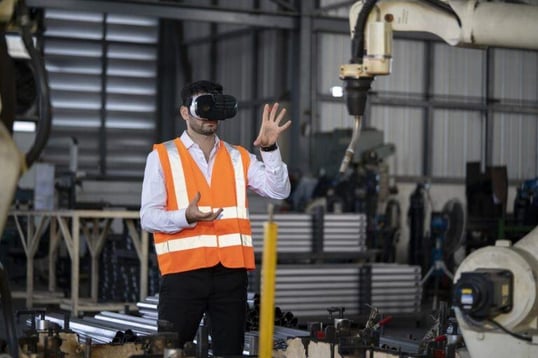
Another emerging trend in Civil Engineering and construction is being induced using Augmented and Virtual Reality (AR/VR). AR is essentially about viewing an imaginative world through a lens. The use of AR allows for planning and plotting sites even before breaking ground (for real this time). VR is about creating and accessing the virtual world through immersive technology.
Imagine this: You create a detailed model of your project using BIM software, and you show it to your clients using VR! Now they can walk around the entire project and check everything for themselves before construction even begins!
Augmented Reality (AR) and Virtual Reality (VR) are changing how engineers visualize and present projects. AR allows on-site visualization before construction starts, while VR lets clients virtually walk through their projects.
These tools reduce design errors and help make faster, more informed decisions, making AR/VR in civil engineering one of the most practical innovations of 2026.
The use of Augmented Reality (AR) and Virtual Reality (VR) in civil engineering is transforming how projects are visualized before construction begins. By 2026, immersive design tools are expected to become a standard practice for pre-construction planning and safety training, improving accuracy and stakeholder communication across all project stages.
3. Use of Advanced Materials
With constant innovation in technology and construction techniques, and the evident climate change and global warming around the world, it is only natural that new materials are being developed. Many of these have already started to be widely adopted across the construction industry.
One of the best emerging trends in Civil Engineering is the recycling of materials that are hard to dispose of to be used as construction materials. Plastics are being incorporated into roadways and 3D printed projects. Carbon Dioxide (CO2) that is obtained as a by-product of various industrial processes is being injected into concrete during ‘curing’, mixing with other chemicals and forming nanoparticles of limestone imparting to it a great compressive strength.

Self-healing concrete is another result of innovation in civil engineering and construction. It gets its ‘self-healing’ properties from calcite-precipitating bacteria, which germinate whenever water enters the cracks in decaying concrete to ‘fill the gaps.’

And that is not even the gist of it. From kinetic paving, that generates electricity from footsteps, 4D-printed structures that are capable of reshaping or self-assembling over time, to smog-eating buildings that are coated in photo-catalytic titanium dioxide that neutralises air pollutants by reacting with light...the list goes on, and on.
New construction materials are addressing sustainability and performance needs. From self-healing concrete to plastics reused in roads, engineers are designing stronger and greener infrastructure.
Carbon-injected concrete and 3D-printed composites are also cutting emissions while improving durability, shaping the future of sustainable construction.
Innovation in material science continues to redefine sustainability in construction. Recycled plastics are being used in asphalt roads, while self-healing concrete extends the lifespan of bridges and tunnels by automatically repairing cracks through bacterial activation.
In the coming years, the focus will shift toward carbon-neutral materials and large-scale adoption of circular construction processes that reuse and repurpose resources efficiently.
4. The Fab. Prefab. (and 3D-Printing)
It is not just the off-site work which is experiencing changes and new ways of doing things. New technology and techniques are making their way to the construction site as well.
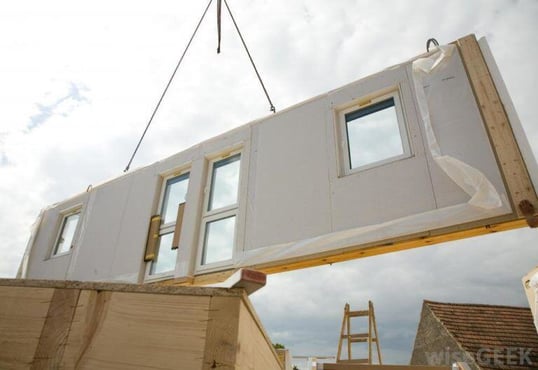
The scope of prefabrication has increased tremendously in the last decade. Especially with the time saved by using BIM during the conception and detailing phase of a project, the various stakeholders ideate over the material alternatives and scope of prefabrication in the project.
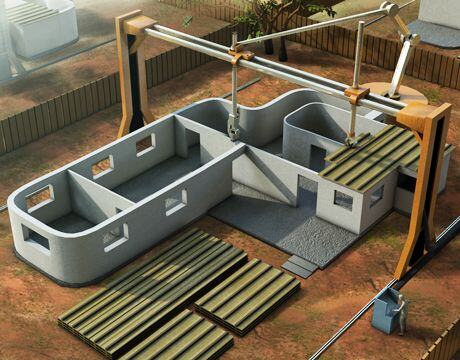
Another interesting emerging trend in civil engineering is the latest construction technology of 3D Printing. With innovations in techniques and materials, 3D Printed structures are well on their way to becoming one of the cheapest and quickest methods of construction.
Prefabrication and 3D printing are reshaping how structures are built. Modular housing projects now assemble off-site components created using BIM-generated blueprints, saving significant time and reducing waste. As digital fabrication becomes more advanced, these techniques will dominate infrastructure development by combining precision manufacturing with sustainable resource use.
5. Machine Interventions - Reducing the ‘workload’
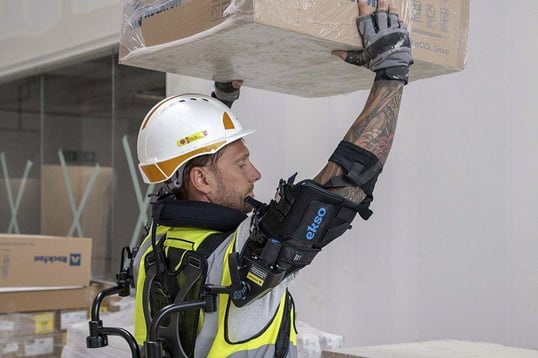
Using Exoskeletons on construction site (Source: www.dreamcivil.com)
The use of machines such as robots and exoskeletons is another emerging trend in civil engineering. Not only do they resolve mundane tasks with ease, but they also help increase safety and autonomy on-site during construction.
Exoskeletons are ‘suits’ worn by construction workers on site, to help and/or improve their mobility and workability. Using exoskeletons prevents injuries caused by manually handling things and from hand-arm vibration.
Comparatively, Robots completely remove the need for the involvement of workers in certain tasks. Robots are helpful in automating highly repetitive tasks like brick-laying and tying rebar.
Automation through robots and exoskeletons is reshaping the construction site. Robots perform repetitive or dangerous tasks like bricklaying, while exoskeletons reduce physical strain for workers.
Automation on construction sites is enhancing both safety and productivity. Robots are now used to perform repetitive tasks like bricklaying or welding, while wearable exoskeletons reduce strain on workers handling heavy equipment.
In the near future, automation systems will evolve further through AI-driven monitoring that enables real-time decision-making and optimized resource management.
6. Building Sustainably
Along with the use of sustainable materials and adopting better construction methods on-site, the recent trends in civil engineering are focusing on sustainable buildings.
The use of smart materials embedded in buildings powered by intelligent electric grids is creating a system of construction that is leading the way to creating more energy-efficient housing. The use of innovative ideas like double-skin facades, PV panels etc. is also adding to this. Efficient spatial planning is also in focus. In fact, considerations of building sustainability are an integral part of the Building Information Modelling system.
Sustainable construction now drives every major project. Engineers are integrating renewable materials, energy-efficient designs, and smart grids into buildings. Double-skin facades and PV panels are improving efficiency while reducing carbon footprints.
Environmental responsibility is at the center of modern civil engineering 2026. Smart buildings today integrate renewable energy sources, solar facades, and energy-monitoring systems to reduce carbon emissions. The future of sustainable construction lies in adopting net-zero energy principles and leveraging intelligent grids that balance energy demand with renewable supply.
7. Smart Designs
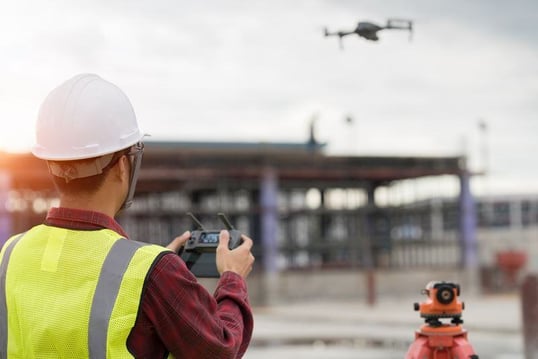
The surveys and inquiries are being carried out using Unmanned Aerial Vehicles (UAVs) or Drones, the use of Artificial Intelligence (AI) and Machine learning during construction are helping to improve productivity, safety and quality of construction.
AI, machine learning, and IoT are empowering smart design in civil engineering. Drones conduct precise surveys, AI predicts risks, and IoT sensors monitor structures in real time.
This interconnected network enables data-driven decisions, leading to safer and more adaptive infrastructure.
The Internet of Things (IoT) is another innovation in civil engineering bringing together a network of structures like smart housing societies that function through detection sensors and energy-efficient methodologies while calculating and analysing their performance for even further improvement in the future. The Data Ecosystem created through such systems is helping in a better demographic and technical analytics of many neighbourhoods.
8. AI and Predictive Analytics in Construction
AI and predictive analytics help forecast project outcomes, identify risks, and optimize resources before construction begins. This improves accuracy, reduces costs, and enhances project planning.
By 2026, predictive modeling will become standard for data-informed decision-making in construction.
Conclusion
In 2026, civil engineering blends technology, sustainability, and innovation to shape a smarter, greener future. From BIM-led collaboration to AI-driven planning and digital twins, the field continues to evolve rapidly.
Since these trends yield quick results and economic benefits for all stakeholders, employees with a knowledge of such technologies often get to see better career options and faster career growth. Did you know that employees in BIM roles earn up to 40% higher salaries?
Civil engineering stands at the intersection of innovation and sustainability. These seven trends highlight how technology, materials, and design are redefining modern infrastructure. Explore the BIM Professional Course for Civil Engineers by Novatr to stay ahead of these transformations.
Frequently Asked Questions
1. What are the latest trends in civil engineering?
The latest civil engineering trends include BIM, AI, 3D printing, sustainable construction, and AR/VR integration.
How is technology changing civil engineering?
Technology enhances collaboration, precision, and sustainability through automation, smart materials, and data-driven design.
How is BIM used in civil engineering?
BIM helps manage design, documentation, and project data, improving efficiency from planning to execution.
What is sustainable construction in civil engineering?
It involves using eco-friendly materials, renewable energy systems, and efficient resource management.
5. Which civil engineering trends will shape the next decade?
AI, automation, and predictive design tools will define the future of civil engineering, driving smarter, greener infrastructure.
Was this content helpful to you







